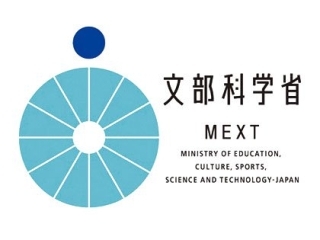Japanese universities’ science education boosted by government

• Japanese universities are to get a transformative financial bost from the government.
• The aim is to improve Japan’s rating as a scientific nation.
• In particular, the challenge will be to make STEM more attractive to young people, particularly young women.
Japanese universities are being incentivized to build or expand their science-related departments, per an announcement made by the education ministry on Friday.
As part of an effort to bolster Japan’s science education, especially in fields related to green and digital technologies, 111 Japanese universities and technical colleges could receive grants through a ¥300 billion ($2.1 billion) fund set up by the government.

The Ministry of Education, Culture, Sports, Sciences and Technology aims to improve Japanese development in relation to the rest of the world.
The country is seeking to improve its international standing in science and technology research. A report released by a ministry-affiliated think tank last year revealed that Japan ranked 12th worldwide for the number of highly cited scientific papers in the three years through 2020.
That’s a significant drop from its standing in the early 2000s, when Japan was fourth in the world.
The issue has been traced back to Japanese universities, where only 35% of students graduate with a degree in the STEM fields – in the US, it’s 38%, South Korea sees 42% and in Britain the number reaches 45%.
It’s not that fewer Japanese students are opting for STEM subjects, but that elsewhere in the world, countries are actively pushing to raise their ratio of science majors in the hopes of leading fast-changing industries.
Remedying the problem
The education ministry’s new program takes a two-pronged approach and will extend over a maximum of ten years.
The first part of the plan focuses on public and private universities that are looking to build new departments or make structural changes to existing departments to strengthen education in digital and green technologies.
The second part is aimed at Japanese universities that already have departments in those areas and want to nurture high-level talent.
YOU MIGHT LIKE

Japanese schools prioritising AI education
When the program was announced on Friday, the education ministry said it had selected 206 universities and five technical colleges eligible for financial support under the first category, encouraging shifts of existing faculties to science-related ones.
Applications for the second category will close at the end of fiscal 2025, which (confusingly) ends in March 2026. Applications for the first category will be accepted until the end of fiscal 2032.
Among the selected schools is Fukui Prefectural University, which will establish a department of dinosaur palaeontology by 2025 – the first in Japan.

Roughly 30% of the schools chosen in the first category were Japanese universities that currently focus predominantly on humanities education but plan to establish a STEM department for the first time. Such institutions will receive up to ¥2 billion each in funding.
“We would like for the chosen institutions to carry out what they plan to accomplish,” education minister Keiko Nagaoka told a news conference on Friday. “We will continue to accept applications and therefore would like other institutions to actively consider participating in the program.”
Three national universities were shortlisted by the ministry late last month for a different program that aims to bring the level of Japanese research institutions up to par with the world’s top universities through a ¥10 trillion fund. The chosen schools would be eligible for long-term grants paid from profits generated by the fund. The selected schools are expected to be announced this fall.
Additionally, the ministry plans to broaden scholarships from April next year. These would cover students from middle-income households looking to major in STEM subjects.
Japanese universities: what about women?

Will extra science funding help boost take-up by women?
As part of the funding scheme, Sanyo-Onoda City University in Yamaguchi Prefecture – an institution specializing in STEM subjects – plans to increase its number of female students by expanding female dorms and other facilities.
Women’s universities in Japan are facing headwinds as the number of 18-year-olds drop and perceptions among female students change.
Women’s colleges had long been seen as schools with a focus on home economics and liberal arts. The advancement of women in Japanese society has seen female students increasingly choose coed universities in urban areas over women’s colleges, where areas of study and enrolment capacities are limited.
Koriyama Women’s University is a traditional school with the Department of Domestic Science offering courses in social welfare and architectural design, and a Department of Food and Nutrition under the School of Home Economics.
The university emphasizes collaborative activities with local governments and businesses in Fukushima Prefecture, alongside the traditional school.
This year, the school received accreditation from the education ministry for providing a curriculum called “Approved Program for Mathematics, Data Science and AI.”
Enticing female students with broader curriculums, there’s an argument that four years of study without having to worry about gender differences – the so-called essence of women’s education – will help build confidence for later in life.

There’s a way to go before Japan can claim Asian Tiger status again.
As well as appealing to Japanese universities, the government needs to make a career in STEM more attractive to young people. Aspiring to return to its heyday of leading technological research, the country might do well to improve working conditions for those graduating into jobs in the science and technology sectors.









